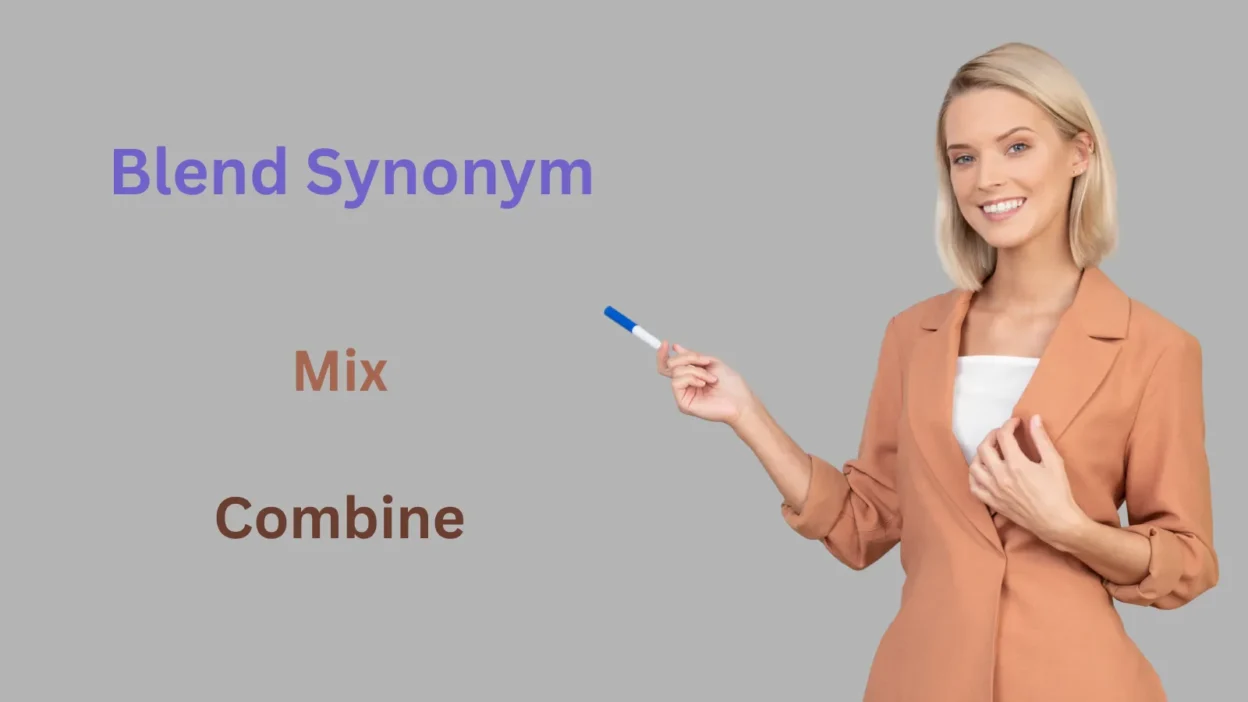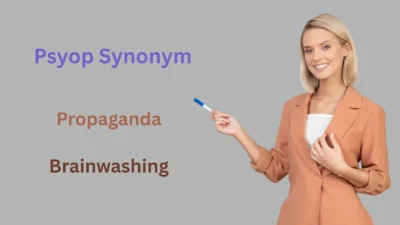Blend Synonym words like mix, combine, and merge describe the act of bringing different elements together into a unified whole. For example, you might say, “She blended different colors to create a masterpiece,” or “Their skills were combined for the project.” Each word shows how separate parts join smoothly or harmoniously.
If you’re writing about cooking, design, music, teamwork, or ideas, using the right synonym for blend makes your message more precise, creative, and vivid.
In this guide, you’ll explore the meaning, example, and best usage for each blend synonym, helping you choose the perfect word for formal, casual, or artistic contexts.
Understanding the Word “Blend”
The word “blend” means to mix, combine, or merge different elements into a single whole. It’s commonly used in cooking, art, writing, music, and teamwork.
For example:
- She blended the ingredients until smooth.
- His personality blends humor with seriousness.
Depending on context, blend can suggest smooth integration, subtle combination, or even harmonious coexistence, and its synonyms reveal these nuances.
30 Synonyms of “Blend” with Meanings, Examples, and Usage Tips
1. Mix
Meaning: To combine two or more elements.
Example: Mix the flour and sugar thoroughly.
When to Use: Everyday or casual contexts; very versatile.
2. Combine
Meaning: To join or unite elements.
Example: Combine the colors to create a new shade.
When to Use: Formal or general writing; professional instructions.
3. Merge
Meaning: To unite smoothly into one entity.
Example: The companies merged to form a larger corporation.
When to Use: Business, technical, or formal writing.
4. Integrate
Meaning: To bring together parts into a unified whole.
Example: The software integrates multiple functions seamlessly.
When to Use: Technical, professional, or analytical contexts.
5. Fuse
Meaning: To join elements so they become inseparable.
Example: The flavors fused perfectly in the recipe.
When to Use: Artistic, culinary, or figurative usage.
6. Unite
Meaning: To come together to form a single unit.
Example: The team united to achieve their goal.
When to Use: Social, teamwork, or motivational tone.
7. Amalgamate
Meaning: To combine formally or completely.
Example: The two companies amalgamated into one entity.
When to Use: Business, legal, or formal contexts.
8. Meld
Meaning: To blend or merge elements harmoniously.
Example: The music melds classical and modern styles.
When to Use: Artistic, musical, or creative contexts.
9. Alloy
Meaning: To mix metals or elements.
Example: Gold and copper were alloyed for the jewelry.
When to Use: Technical, metallurgical, or scientific contexts.
10. Synthesize
Meaning: To combine components to form a coherent whole.
Example: The report synthesizes various research findings.
When to Use: Academic, technical, or analytical writing.
11. Coalesce
Meaning: To come together and form one mass or group.
Example: The ideas coalesced into a brilliant strategy.
When to Use: Formal or literary tone; emphasizes natural unification.
12. Marry
Meaning: To join or unite perfectly.
Example: The chef married flavors from different cuisines.
When to Use: Culinary, figurative, or creative writing.
13. Admix
Meaning: To mix one substance with another.
Example: Admix the dyes for a uniform color.
When to Use: Technical, scientific, or industrial contexts.
14. Intertwine
Meaning: To twist or weave together.
Example: Their lives intertwined after years of friendship.
When to Use: Figurative, literary, or personal contexts.
15. Intermix
Meaning: To mix together.
Example: The different seeds were intermixed in the soil.
When to Use: Scientific, technical, or descriptive writing.
16. Hybridize
Meaning: To combine different species or elements.
Example: The plants were hybridized to produce new varieties.
When to Use: Biological, botanical, or technical contexts.
17. Conflate
Meaning: To combine ideas or texts into one.
Example: The editor conflated two reports into a single article.
When to Use: Academic, literary, or analytical writing.
18. Interblend
Meaning: To mix or merge elements together.
Example: The spices interblended to create a complex flavor.
When to Use: Culinary or descriptive contexts.
19. Homogenize
Meaning: To make uniform or consistent by blending.
Example: Milk is homogenized to prevent separation.
When to Use: Scientific, technical, or industrial contexts.
20. Co-mingle
Meaning: To mix together.
Example: The two streams co-mingled in the valley.
When to Use: Descriptive, literary, or geographical writing.
21. Combine Forces
Meaning: To join efforts to achieve a goal.
Example: The teams combined forces for a charity event.
When to Use: Teamwork, collaborative, or motivational contexts.
22. Mesh
Meaning: To fit or work together harmoniously.
Example: Their skills meshed perfectly on the project.
When to Use: Figurative or teamwork contexts.
23. Weave
Meaning: To combine elements intricately.
Example: The author weaves humor into the story seamlessly.
When to Use: Literary, artistic, or figurative writing.
24. Mix Up
Meaning: To combine casually or informally.
Example: He mixed up all the ingredients in a bowl.
When to Use: Casual, everyday, or informal contexts.
25. Jumble
Meaning: To mix without order.
Example: The papers were jumbled together in the drawer.
When to Use: Informal or chaotic mixing.
26. Incorporate
Meaning: To include as part of a whole.
Example: The curriculum incorporates modern teaching methods.
When to Use: Formal, educational, or business contexts.
27. Interweave
Meaning: To blend or combine intricately.
Example: The narrative interweaves history and fiction.
When to Use: Literary or artistic writing.
28. Commingle
Meaning: To mix or blend thoroughly.
Example: The waters from two rivers commingled peacefully.
When to Use: Formal, descriptive, or natural contexts.
29. Conjugate
Meaning: To join or combine elements systematically.
Example: The software conjugates multiple data streams for analysis.
When to Use: Technical, scientific, or analytical writing.
30. Incorporate Elements
Meaning: To combine separate parts into a whole.
Example: The dish incorporates elements from various cuisines.
When to Use: Culinary, creative, or instructional contexts.
Choosing the Right Synonym for “Blend”
Selecting the right synonym depends on context, tone, and purpose:
- Formal/Technical: integrate, amalgamate, coalesce, homogenize
- Creative/Artistic: meld, intertwine, weave, interweave, marry
- Culinary/Descriptive: mix, fuse, interblend, incorporate
- Teamwork/Collaboration: combine forces, mesh, unite
- Casual/Informal: mix up, jumble, co-mingle
Cultural Tip:
In Western English, casual words like mix and combine are widely understood.
For artistic or literary writing, meld, weave, and intertwine feel richer and more expressive.
Conclusion :
Blend Synonym words reveal the many ways elements, ideas, or people can come together, merge, or harmonize. From formal integration to creative fusion, each word carries tone and nuance.
Choosing the right synonym ensures your writing communicates clarity, style, and precision, making descriptions of combined elements more vivid, professional, and expressive.



